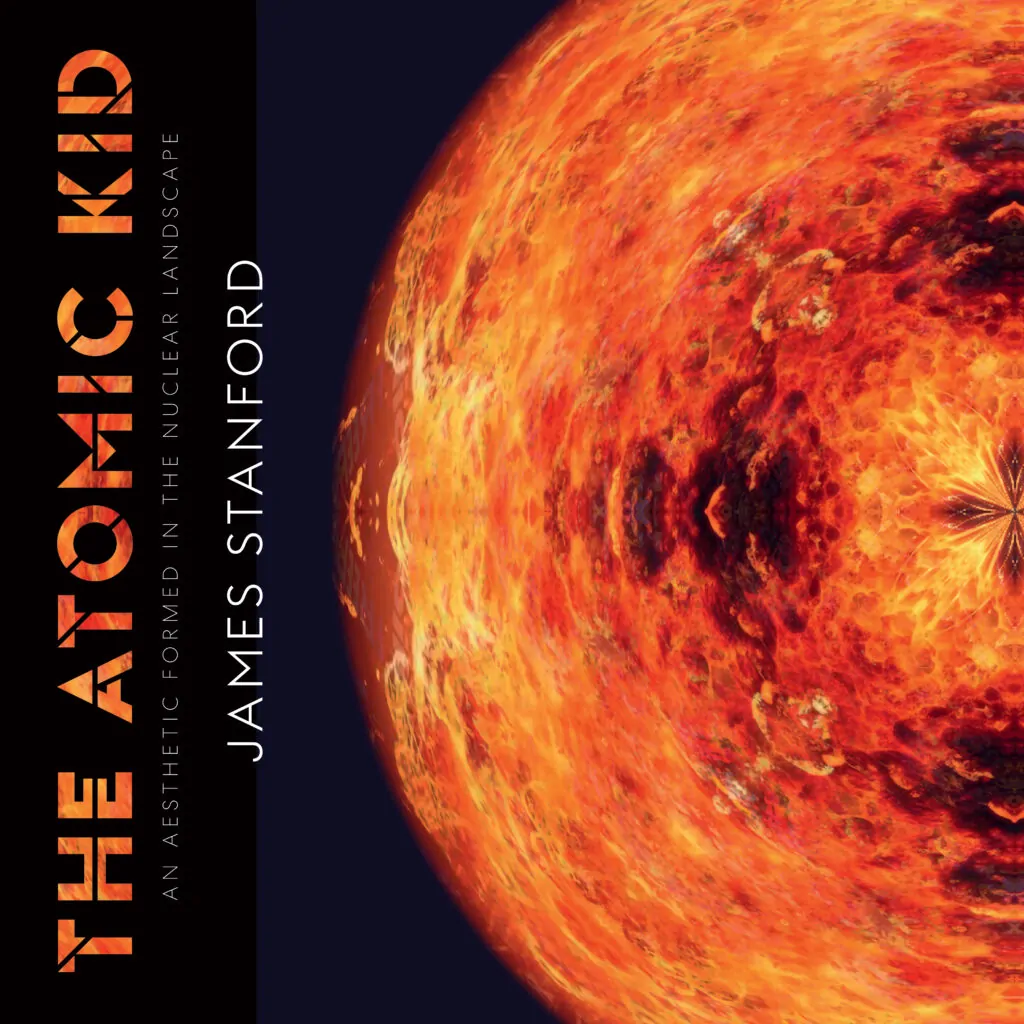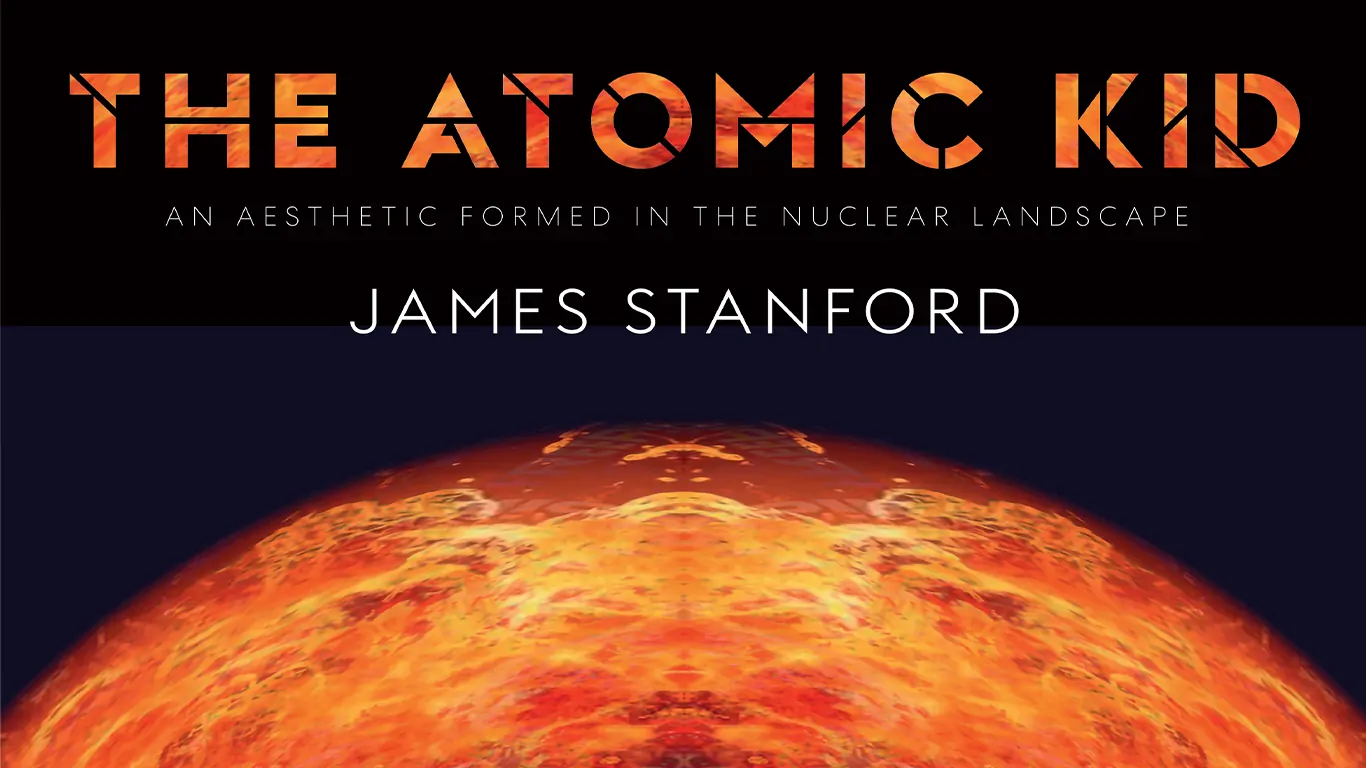[cloud] and Smallworks Press are delighted to announce the publication of The Atomic Kid by acclaimed American artist James Stanford. Timed to coincide with the opening of the permanent exhibition Atomic Odyssey at the Smithsonian’s Atomic Museum in Las Vegas, The Atomic Kid features illustrations of 21 artworks and essays by leading art historians Rosa JH Berland and Jean Wainwright.
The book is available as a special, numbered and signed limited-edition hardback, as well as a more accessible softcover edition. Designed by Philip Lewis and edited by Dr. Jane Boyer and Dr. Gemma Marmalade of [cloud], The Atomic Kid offers a unique perspective on the intersection of nuclear history and contemporary art.
A Childhood in the Atomic City
Born from Stanford’s experience growing up in the shadow of Las Vegas—dubbed the Atomic City for its proximity to the Nevada atomic testing site—The Atomic Kid explores the visual and emotional impact of nuclear testing on American culture. Stanford recalls being “enchanted” by the destructive power and eerie beauty of the explosions, describing:

By James Stanford
“I can still recall the light that resembles an early morning sunrise from the blasts filling the night sky, and I felt the rumble of shock waves regularly sweeping down the Las Vegas Valley.”
James Stanford
He reflects further on the surreal experience of witnessing nuclear detonations:“Mushroom clouds in the distance enhanced the amazing sunsets and purple mountains of the Mojave Desert.”
During the 1950s and ’60s, above-ground nuclear testing was an accepted part of everyday life in Nevada. Over 200 atmospheric tests were conducted by the United States Atomic Energy Commission before 1963. However, it wasn’t until the Cold War and the Cuban Missile Crisis heightened fears of nuclear war that the dangers of radiation and fallout became a real concern for many Nevadans.
From Nuclear Testing to Zen-Inspired Art
Stanford’s connection to nuclear culture extended beyond childhood. As a postgraduate, he worked as a technical illustrator for the Atomic Energy Commission, flying in fixed-wing aircraft to create precise aerial measurements of nuclear reactors, factories, and laboratories. Using Hasselblad cameras, he documented nuclear sites, later translating these images onto transparent acrylic sheets with mechanical pens, an intricate and meditative process.
Stanford describes how this meticulous work aligned with his practice of Zazen meditation, saying: “It taught me not to be afraid of highly detailed forms.” His dual experiences—firsthand exposure to nuclear testing and deep engagement in Zen Buddhism—shape his distinctive artistic perspective on American nuclear culture. Unlike many artists who have explored the atomic age symbolically, Stanford’s work is deeply personal, offering an intimate, philosophical reflection on the intersection of nuclear power, mortality, and cosmic existence.
The Atomic Series & Smithsonian’s Atomic Museum
Stanford was commissioned by the Atomic Museum to create four artworks on the theme of nuclear power for Atomic Odyssey. His Atomic Series transforms the mushroom cloud, a historical and cultural symbol of destruction, into an intricate, layered digital composition. His work moves beyond traditional representations of nuclear anxiety, instead questioning: What is the metaphorical body in relation to the bomb’s destructive power?
Rob McCoy, CEO of the Atomic Museum, reflects on Stanford’s work in The Atomic Kid: “Jim’s work touches on our shared experiences of growing up in Nevada’s nuclear landscape. It’s our DNA brought to life. Those of us who call Las Vegas home see more than an empty desert or atomic test sites. Jim captures this in his art in a way never done before.”
A Vision of Nuclear Beauty & Power
In The Atomic Kid, Stanford presents nuclear energy as both destructive and mesmerizing, embodying the yin and yang of existence—not just as a symbol, but as an interconnected cosmic force. His work invites viewers to reconsider the legacy of the atomic age, seeing beyond fear to a deeper, more nuanced reflection on power, beauty, and impermanence.
The Atomic Kid: An Aesthetic Formed in the Nuclear Landscape James Stanford
Edited by J. Boyer & G. Marmalade
Published by Smallworks Press
ISBN: 9781733857475
96 pages, including illustrations of 21 works by Stanford
Collector’s Edition (Hardbound)
Cloth-covered, hardbound collector’s edition, published to coincide with the opening of Atomic Odyssey at the Atomic Museum, Las Vegas.
Signed, limited edition of 100 copies.
Each book includes an inset mini lenticular artwork and a signed Certificate of Authentication.
Price: £225
Softcover Edition
Launch: February 2025 (UK release)
Price: £50
©2025 Smallworks Press





